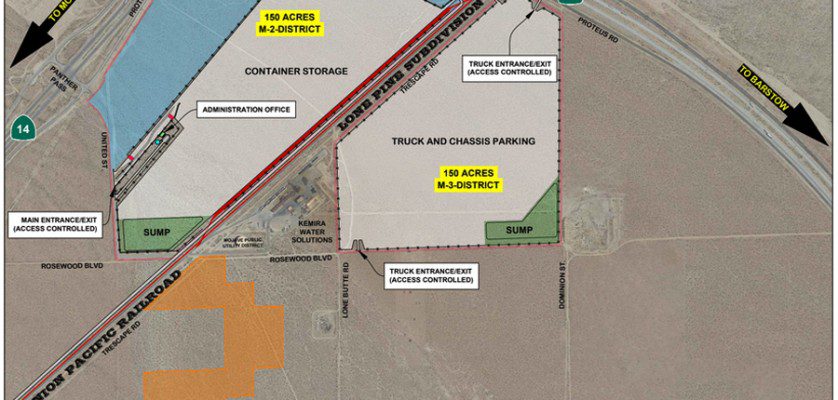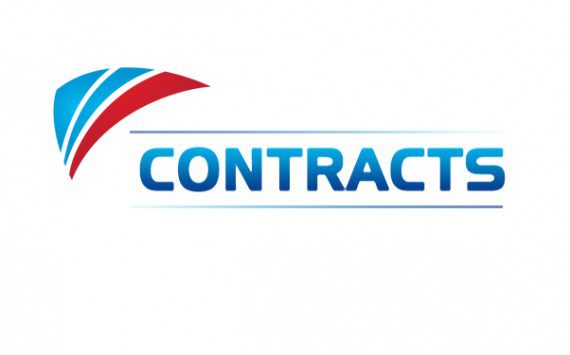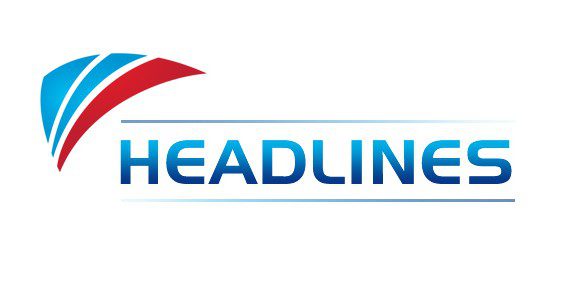MOJAVE, Calif. — Decades before achieving fame as the birthplace of civilian aerospace research and development, Mojave was a demarcation point and natural transportation route connecting Northern and Southern California via the San Joaquin Valley.
That history now becomes a possible destiny as Kern County moves to lead California’s struggles to repair a worsening crisis in supply chain movement from seaports. With the Supervisors leading from Bakersfield, Mojave is being ushered into the role of becoming Central California’s transportation portal and crossroads portal for freight and travelers moving to the four cardinal compass points.
While Mojave is touted as the state’s first fully multimodal inland port trifecta for rail, trucking and air cargo, the existing holder of that distinction is Southern California Logistics Airport (SCLA) across the desert southeasterly at Victorville in San Bernardino County.
The former George Air Force Base, decommissioned in 1992, was opened as an international airport in late 1994, and later granted a Federal Aviation Administration (FAA Part 139 Certificate in 1995 to serve passengers and cargo operations.
In a report from developers, the total cost for buildout of SCLA over the decades was pegged at $1.5 billion.
In commonality with plans announced for the Mojave Inland Port project, SCLA’s FAA certification classifies the field as an industrial base for aircraft maintenance and completion, flight testing, research and development, aircraft asset management, storage and recycling. SCLA encompasses “off-airport” development areas for non-aeronautical uses owned and operated by the SCLA. The company Prologis has development rights to approximately 1,300 acres in a logistics centered industrial park.
Although the Mojave and Victorville inland ports share common purposes and terminology, a difference in FAA certifications between the two raises the question of whether Kern County’s fast-tracked inland port groundbreaking in 2023 and grand opening in 2024 may face a speed bump called Federal Aviation Administration Form 7460-1. That’s a Notice of Construction or Alteration required for certain airports by the FAA.
Tim Reid, MASP’s CEO, just promoted from Chief of Operations, said a letter his predecessor sent to the Kern County Planning Department dealt with planning and zoning matters, such as developments incompatible or detrimental to airport operations. That would include homes, apartment buildings, schools, shopping centers mining and waste dumps.
The FAA’s concerns under Administration Form 7460-1 center on potential hazards created by changes even beyond the airport boundaries. People familiar with the paperwork say it’s a slow and formidable process, with separate paperwork and reporting on each change.
On Aug. 25, the Mojave Chamber of Commerce held a lunch meeting to learn more about the project. East Kern District Supervisor Zack Scrivner was scheduled to speak but was replaced on the in-person and Zoom program by Lorelei Oviatt, director of Kern’s Planning and Natural Resources Department.
William “Bill” Deaver, a lifelong Mojave civic leader, former airport director, newspaper publisher, historian and current vice president of the Mojave Chamber of Commerce, is a strong supporter of the inland port project. Although he didn’t speak at the meeting, he cited the inland port’s economic benefits to the town from job growth, an expanded tax base, housing development and new business growth. He told Aerotech, “We’ve been working on this for years.”
Oviatt told the in-person audience of 30 with 10 more watching or listening virtually that she’s personally excited by the inland port project, and there are many details yet to be worked out. Citing the economic losses to Mojave when the state rerouted Highway 58 to bypass the business district, she urged residents of Kern’s Mountain and desert region to assure that both public and private drivers of the inland port provide assurances that communities gain, not lose equity, specifically on the local business tax base, which is essential to their survival.
She specifically attacked the state of California Air Resources Board’s accelerated race to ban gasoline and gas-powered vehicles by 2035, noting the tax on gasoline provides substantial revenue for less populous areas.
While $75 million has been cited as the expected construction cost of the port itself, Oviatt said many times that amount may be need from local, county, state and federal sources for freeway and rail construction, electricity generation, law enforcement and other services.
While the state set aside $1.9 billion for road improvement and $50 million for an elevated grade-crossing over the railroad tracks in Rosamond, other projects will be needed in Los Angeles County.
Oviatt said that while the Mojave Specific Plan provides standards to prevent shoddy development, such as unpaved parking areas, she would welcome a public hearing, including coordination with the highway patrol and sheriff’s department, both of which are stretched to beyond their limits.
On a question from Aerotech concerning the county’s contact with and input from the tenants of Mojave Air and Space Port, said the letter from the previous airport manager finding do issues with the plans was sufficient. And on a follow-up question about her department’s possible concerns with FAA airport area construction certification, she said there is nothing in the plans to require that.
Prior to the meeting in Mojave, regional news coverage dwindled within a few days after the promotional ceremony in Bakersfield. But the Aug. 23 online edition of transportation industry publication Freight Waves, broke fresh ground on the subject, going beyond canned press releases to report the figure of $75 million as an estimated cost for inland port construction.










